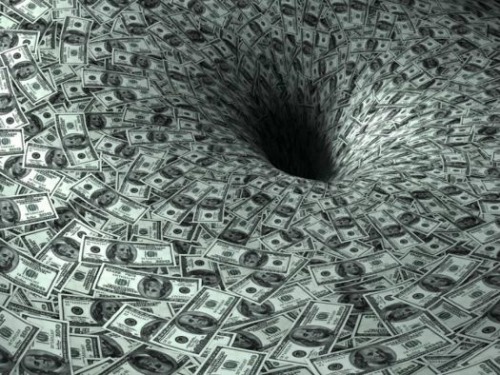
Suppose that the stock market offers an average return on investment of 12% - 15% over a period of ten years. This sort of return sounds like an excellent investment opportunity, but you must note that an average of 15% could mean two things.
Due to the cyclical nature of modern economies, the first case is highly unlikely. The average of 15% plays out in the long run; thus, a person entering the stock market to earn a 15% return on investment every year for five consecutive years might be in for a surprise.
Let's draw an analogy by taking the example of a six feet tall man, who can't swim, and drowns in a river that is only five feet deep on average.
This statement alone might not make sense at first, but if you think about it, a river that is five feet deep on average would not have the same depth throughout. It could be three feet deep at one end, seven feet, four feet or six feet deep at another. The average depth of the river could still be five feet, but a six feet tall man can still drown himself at the point where the depth is seven feet.
Similarly, even though the stock market offers an average return of 15% over the long run, the distribution of these returns is like the different depths of the river. The market might give attractive returns in the first few years, but it is just as likely to give zero or negative returns in later years, and vice versa. However the average could still be 15%.
Table 1: shows the returns offered on the stock market each year for the last ten years.
|
Year |
Returns |
|
Y1 |
20.00% |
|
Y2 |
37.00% |
|
Y3 |
31.00% |
|
Y4 |
-7.00% |
|
Y5 |
-12.00% |
|
Y6 |
26.00% |
|
Y7 |
-23.00% |
|
Y8 |
52.00% |
|
Y9 |
-10.00% |
|
Y10 |
36.00% |
|
Average |
15.00% |
Suppose Maria invests Rs 100,000 in the stock market with the hope that her investment will grow at the rate of 15% annually. As depicted in the above table, for the first three years, Maria would be more than happy to keep her investment in the market because the returns offered in these three years exceed her expectations. However, in the fourth year, the stock market declines, and the value of her investment falls by 7%. She thinks of pulling out her investment but stays put and gives the market another chance.
Unfortunately, the market declines next year as well and to avoid incurring a bigger loss, Maria decides to wind up her investment in the stock market. Now that Maria has pulled her investments out of the stock market, take a look at how the stock market performed in the years that followed - Specially from year 6 to year 10 in Table 1. The stock market posted a positive return in year six, and the annual returns that followed were in both negative and positive territories but ultimately converged to an average of 15%.
The road to wealth creation is full of fluctuating returns. Good Investors are consistent and do not make impulsive decisions based on temporary fluctuations.
As Warren Buffet, the world's most successful investor says, "If you aren't thinking about owning a stock for ten years, don't even think about owning it for 10 minutes."



